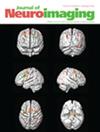Transcranial Doppler Arterial Pressure Gradient Is Associated With Delayed Infarction After Subarachnoid Hemorrhage
Abstract
Background and Purpose
While the pulsatility index (PI) measured by transcranial Doppler (TCD) has broader associations with outcomes in neurocritical care, its use in monitoring delayed cerebral infarction (DCI) in patients with aneurysmal subarachnoid hemorrhage (SAH) is not endorsed by current clinical guidelines. Recognizing that arterial pressure gradient (ΔP) can be estimated using PI, we investigated the potential significance of TCD-estimated ΔP.
Methods
In this observational study of 186 SAH patients, we recorded the mean cerebral blood flow velocity (mCBFV) and PI values from the middle cerebral artery, along with corresponding blood pressures. Using a previously reported mathematical model, we estimated ΔP by dividing pulse pressure by PI. We investigated the association between ΔP and mCBFV values and two acute phase complications of SAH—DCI and angiographic vasospasm. Additionally, we explored the association between DCI, vasospasm, and 90-day functional outcome.
Results
Elevated ΔP was associated with DCI (odds ratio [OR] 1.021, 95% confidence interval [CI] 1.004–1.039, p = 0.014) but not vasospasm (OR 1.006, 95% CI 0.991–1.022, p = 0.402). Elevated mCBFV was associated with vasospasm (OR 1.037, 95% CI 1.017–1.057, p < 0.001) but not DCI (OR 0.998, 95% CI 0.979–1.018, p = 0.873). DCI (OR 29.380, 95% CI 2.930–294.615, p = 0.004), rather than vasospasm (OR 0.695, 95% CI 0.120–4.043, p = 0.686), was associated with functional outcome.
Conclusions
Increased ΔP, rather than elevated mCBFV, was associated with DCI. While elevated mCBFV was associated with vasospasm, it was not associated with DCI. Hence, TCD-estimated ΔP may serve as a predictor for the DCI in SAH patients, a condition that impacts long-term outcome.


 求助内容:
求助内容: 应助结果提醒方式:
应助结果提醒方式:


